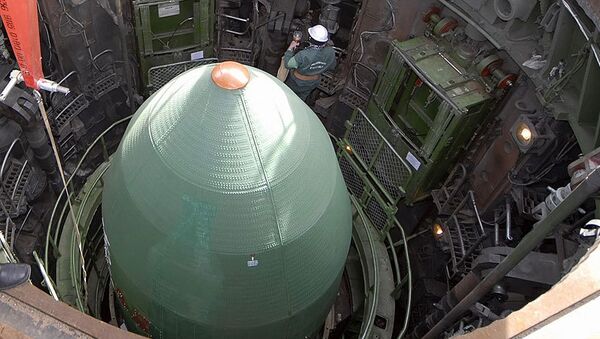MOSCOW, August 4 (RIA Novosti)- Japanese newspaper Asahi Shimbun sponsored a peace symposium “The Road to Nuclear Weapons Abolition: To Overcome ‘Nuclear Umbrella,’” on August 2 in Nagasaki and Hiroshima which saw speakers and an audience of 400 in a discussion on the steps to reduce and eventually eliminate nuclear arsenals around the world.
“I strongly believe that those of us, the US allies, including my own country, who are presently sheltering or believing that we are sheltering under the US nuclear umbrella, should be prepared to make it very clear our acceptance of a much reduced role of nuclear weapons in our protection,” Gareth Evans, chancellor of Australian National University and Australian foreign minister between 1988 and 1996, said in his keynote speech.
Panelists and speakers at the symposium explained that Japanese Prime Minister Shinzo Abe’s tactics to strengthen Japan-US military cooperation would in effect increase their reliance on the United States’ nuclear umbrella. Such a move would not only do harm Japan, but also hinder the global effort to reduce the use of nuclear weapons.
“This is not an easy issue for Japan to deal with, torn between the horror of its 1945 experiences and its passion for nuclear protection, but a more robust commitment to really leading the way of nuclear disarmament would pay real dividends,” Evans added.
Japan is the only country to ever be hit by atomic weapons, making its people, particularly those from Nagasaki and Hiroshima, witness to its devastating effects. Finally overcoming the “nuclear umbrella” will be a significant step that could potentially have global effects.
The symposium was held ahead of events in Hiroshima and Nagasaki in remembrance of the 69th anniversary of the cities’ atomic bombings.
Japan’s most recent brush with nuclear disaster, the largest nuclear accident since Chernobyl, was on March 11, 2011, involving the Fukushima Daiichi nuclear power plant failure that saw a meltdown of three of the plant’s six nuclear reactors. The plant was hit by a tsunami triggered by the Tohoku earthquake, causing substantial amounts of radioactive material to be released the following day.


